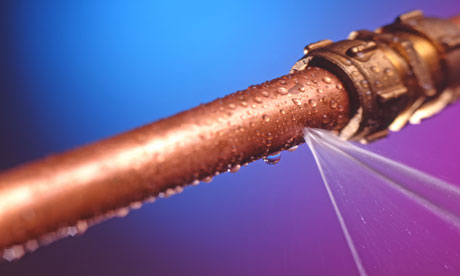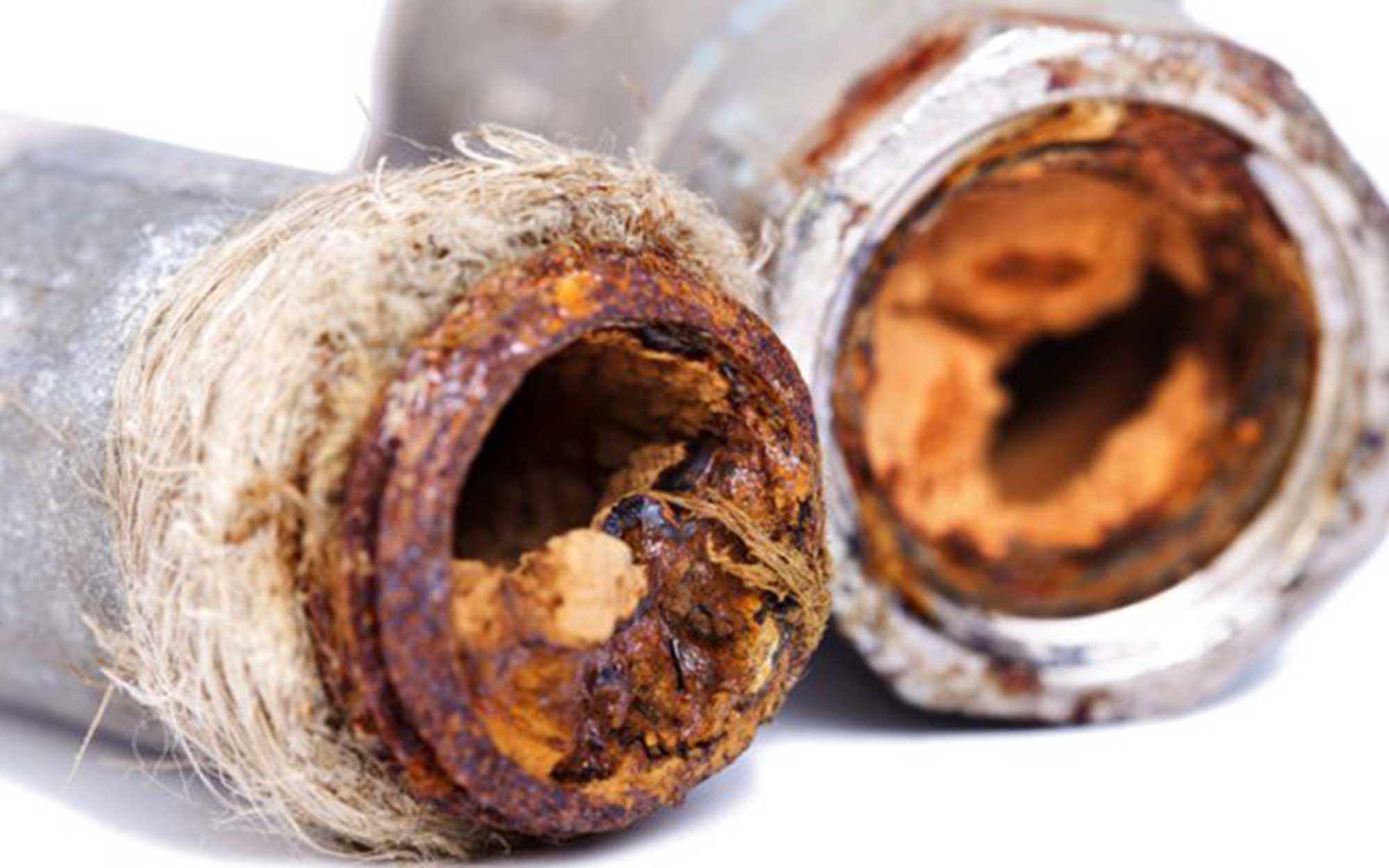What're your thoughts on Diagnose Unwanted Plumbing Noises?

To identify noisy plumbing, it is very important to figure out very first whether the undesirable noises happen on the system's inlet side-in various other words, when water is turned on-or on the drain side. Noises on the inlet side have varied causes: excessive water stress, used shutoff and also tap parts, incorrectly linked pumps or other appliances, incorrectly positioned pipeline bolts, as well as plumbing runs including a lot of tight bends or other constraints. Sounds on the drainpipe side typically come from poor location or, similar to some inlet side sound, a design including tight bends.
Hissing
Hissing noise that takes place when a tap is opened somewhat typically signals excessive water stress. Consult your regional water company if you suspect this trouble; it will have the ability to inform you the water pressure in your location and can mount a pressurereducing shutoff on the incoming water pipe if necessary.
Other Inlet Side Noises
Squeaking, squeaking, damaging, snapping, and also tapping generally are triggered by the expansion or tightening of pipes, normally copper ones supplying hot water. The audios occur as the pipelines slide against loosened fasteners or strike close-by house framework. You can often identify the area of the issue if the pipelines are revealed; just adhere to the sound when the pipelines are making noise. Probably you will certainly discover a loosened pipe hanger or a location where pipes exist so near to flooring joists or other mounting pieces that they clatter against them. Affixing foam pipe insulation around the pipelines at the point of call ought to treat the problem. Make sure straps and also hangers are safe and also offer appropriate assistance. Where possible, pipeline bolts should be connected to huge structural aspects such as structure walls rather than to mounting; doing so lessens the transmission of vibrations from plumbing to surface areas that can intensify as well as move them. If affixing bolts to framework is unavoidable, wrap pipelines with insulation or various other durable product where they get in touch with bolts, and sandwich the ends of new fasteners in between rubber washing machines when installing them.
Fixing plumbing runs that suffer from flow-restricting tight or various bends is a last resource that ought to be embarked on just after seeking advice from a skilled plumbing specialist. Unfortunately, this circumstance is rather typical in older homes that may not have been developed with interior plumbing or that have seen numerous remodels, particularly by novices.
Chattering or Screeching
Extreme chattering or screeching that takes place when a shutoff or tap is activated, and that usually vanishes when the installation is opened totally, signals loose or malfunctioning internal components. The solution is to replace the shutoff or tap with a new one.
Pumps and also devices such as washing equipments and dishwashers can transfer motor sound to pipelines if they are poorly linked. Connect such items to plumbing with plastic or rubber hoses-never rigid pipe-to isolate them.
Drainpipe Sound
On the drainpipe side of plumbing, the principal objectives are to eliminate surfaces that can be struck by dropping or hurrying water and to protect pipelines to have unavoidable audios.
In new building, bathtubs, shower stalls, bathrooms, and wallmounted sinks as well as basins should be set on or against resilient underlayments to decrease the transmission of noise via them. Water-saving bathrooms and faucets are much less loud than conventional versions; mount them rather than older kinds even if codes in your location still allow utilizing older components.
Drainpipes that do not run vertically to the cellar or that branch right into straight pipeline runs supported at flooring joists or various other framing present particularly problematic noise troubles. Such pipes are large sufficient to emit considerable vibration; they also bring considerable quantities of water, which makes the circumstance worse. In new construction, specify cast-iron soil pipes (the big pipelines that drain pipes commodes) if you can afford them. Their enormity includes a lot of the sound made by water travelling through them. Likewise, prevent transmitting drainpipes in walls shared with bedrooms as well as rooms where people collect. Walls containing drains ought to be soundproofed as was described previously, making use of dual panels of sound-insulating fiber board and also wallboard. Pipes themselves can be covered with unique fiberglass insulation produced the objective; such pipes have an invulnerable vinyl skin (often having lead). Outcomes are not always satisfying.
Thudding
Thudding noise, commonly accompanied by trembling pipes, when a faucet or device valve is turned off is a problem called water hammer. The noise as well as resonance are triggered by the reverberating wave of stress in the water, which unexpectedly has no location to go. In some cases opening up a shutoff that releases water swiftly right into a section of piping consisting of a restriction, arm joint, or tee fitting can produce the exact same problem.
Water hammer can typically be treated by mounting fittings called air chambers or shock absorbers in the plumbing to which the issue shutoffs or faucets are attached. These tools allow the shock wave produced by the halted circulation of water to dissipate in the air they include, which (unlike water) is compressible.
Older plumbing systems might have brief vertical sections of capped pipeline behind wall surfaces on faucet runs for the very same purpose; these can eventually fill with water, minimizing or damaging their effectiveness. The remedy is to drain pipes the water supply completely by shutting off the primary water supply valve as well as opening up all taps. Then open the primary supply shutoff and also shut the faucets one at a time, starting with the tap nearest the shutoff and also finishing with the one farthest away.
3 Most Common Reasons for Noisy Water Pipes
Water hammer
When water is running and is then suddenly turned off, the rushing liquid has no place to go and slams against the shut-off valve. The loud, thudding sound that follows is known as a water hammer. Besides being alarming, water hammer can potentially damage joints and connections in the water pipe itself. There are two primary methods of addressing this issue.
Check your air chamber. An air chamber is essentially a vertical pipe located near your faucet, often in the wall cavity that holds the plumbing connected to your sink or tub. The chamber is filled with air that compresses and absorbs the shock of the fast moving water when it suddenly stops. Unfortunately, over time air chambers tend to fill with water and lose their effectiveness. To replenish the air chambers in your house you can do the following. Turn off the water supply to your house at the main supply (or street level). Open your faucets to drain all of the water from your plumbing system. Turn the water back on. The incoming water will flush the air out of the pipes but not out of the vertical air chamber, where the air supply has been restored. Copper pipes
Copper pipes tend to expand as hot water passes through and transfers some of its heat to them. (Copper is both malleable and ductile.) In tight quarters, copper hot-water lines can expand and then noisily rub against your home's hidden structural features — studs, joists, support brackets, etc. — as it contracts.
One possible solution to this problem is to slightly lower the temperature setting on your hot water heater. In all but the most extreme cases, expanding and contracting copper pipes will not spring a leak. Unless you’re remodeling, there's no reason to remove sheetrock and insert foam padding around your copper pipes.
Water pressure that’s too high
If your water pressure is too high, it can also cause noisy water pipes. Worse, high water pressure can damage water-supplied appliances, such as your washing machine and dishwasher.
Most modern homes are equipped with a pressure regulator that's mounted where the water supply enters the house. If your home lacks a regulator, consider having one professionally installed. Finally, remember that most plumbers recommend that water is delivered throughout your home at no lower than 40 and no greater than 80 psi (pounds per square inch).
Whatever the state of your plumbing, one thing is certain — you’re eventually going to encounter repair and replacement issues around your home that require professional help. That’s where American Home Shield can come to your aid.
https://www.ahs.com/home-matters/repair-maintenance/causes-of-noisy-water-pipes/

We hope you liked our section on How To Fix Noisy Pipes. Thank you so much for taking time to browse our blog. Do you know another individual who is interested by the niche? Why not share it. We treasure reading our article about Why Do My Plumbing Pipes Make A Knocking Noise.
Automated Marketing